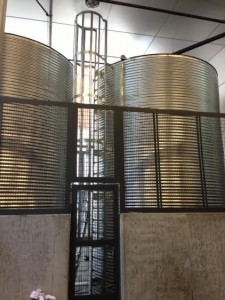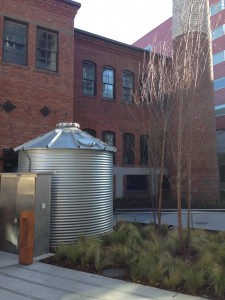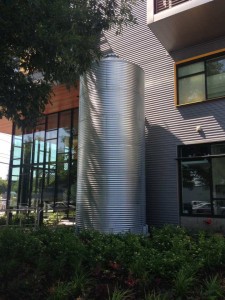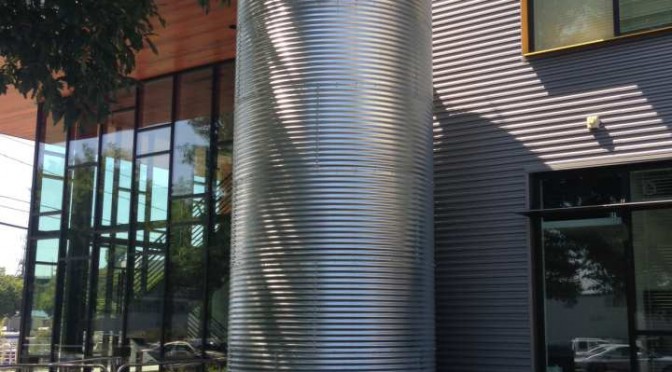 We recently discussed designing a residential rainwater collection storage for irrigation based on capacity and amount of irrigation needed. Now lets look into designing a commercial rainwater collection system for irrigation, based on the same theory.
We recently discussed designing a residential rainwater collection storage for irrigation based on capacity and amount of irrigation needed. Now lets look into designing a commercial rainwater collection system for irrigation, based on the same theory.
 Commercial irrigation demands are significantly higher than residential, requiring much larger storage capacities. Landscaping of a commercial building can be extensive. The use of drought tolerant plants, swales and rain gardens are becoming increasingly popular. New construction is required to infiltrate or use roof runoff. Rainwater collection can offset costs of expensive infiltration and cut municipal water supply usage.
Commercial irrigation demands are significantly higher than residential, requiring much larger storage capacities. Landscaping of a commercial building can be extensive. The use of drought tolerant plants, swales and rain gardens are becoming increasingly popular. New construction is required to infiltrate or use roof runoff. Rainwater collection can offset costs of expensive infiltration and cut municipal water supply usage.
 The larger roof area of a typical commercial building will produce a large amount of water. If one square foot of surface area receives .623 gallons of water per 1″ of rainfall, a 20,000 square foot roof will yield approximately 12,460 gallons per 1″ of rain. If 1″ of rainfall is required for the healthy growth of plants and 1 square foot of surface area receives .623 gallons per 1″ of rainfall, a 4,000 square foot area would require 2,492 gallons per week or 29,904 gallons stored for the 3 month dry period.
The larger roof area of a typical commercial building will produce a large amount of water. If one square foot of surface area receives .623 gallons of water per 1″ of rainfall, a 20,000 square foot roof will yield approximately 12,460 gallons per 1″ of rain. If 1″ of rainfall is required for the healthy growth of plants and 1 square foot of surface area receives .623 gallons per 1″ of rainfall, a 4,000 square foot area would require 2,492 gallons per week or 29,904 gallons stored for the 3 month dry period.
From these equations, you can see that careful thought to the landscaping will help bring the storage capacity down. As much as 50% reduction can be achieved by integrating both landscaping design and storage capacities. Generally, steel, bolted together “silo”, style tanks are best suited for commercial applications. Many architects are including these cisterns as focal points in their designs, adding a bit of an industrial look. Irrigation of landscaping uses most of its water during the summer months. By incorporating rain gardens or swales into the landscaping, considerable amounts of water can be infiltrated during the rainy season while stored water providing watering during the summer months.

